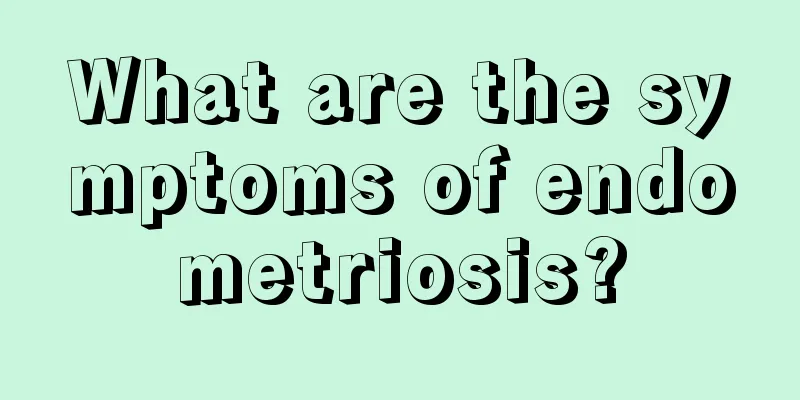What are the symptoms of endometriosis?

|
Generally speaking, endometriosis can be divided into four types. The symptoms of the four conditions are similar and pose a great threat to the patient's uterine health. Endometriosis is a relatively common gynecological disease, so everyone should understand the symptoms of this disease in life and understand their own body in time. 1. Peritoneal endometriosis: Peritoneal endometriosis refers to various endometriosis lesions occurring in the peritoneum of the pelvic and abdominal cavities, mainly including red lesions (early lesions), blue lesions (typical lesions) and white lesions (old lesions). 2. Ovarian endometriosis: Ovarian endometriosis can form cysts, called endometriosis cysts (endometriosis cysts); according to the size of the cyst and the degree of infiltration of the ectopic lesions, they are divided into: Type I: The cyst diameter is <2cm, the cyst wall has adhesions, the anatomical layers are unclear, and it is difficult to remove it during surgery. Type II: It is further divided into 3 subtypes: IIA: The endometrial implants are superficial, involving the ovarian cortex and not reaching the wall of the ovarian endometriosis cyst. It is often accompanied by functional cysts, which are easy to remove during surgery. Ⅱ B: The endometrial implants have involved the wall of the ovarian endometriosis cyst, but the boundary with the ovarian cortex is clear and it is easier to remove during surgery. II C: Endometrial implants penetrate the wall of the ovarian endometriosis cyst and extend to the surrounding area. The cyst wall is tightly adhered to the ovarian cortex and is accompanied by fibrosis or multilocular cavities. The cyst is adhered to the pelvic side wall and is large in size, making it difficult to remove during surgery. 3. Deep infiltrating endometriosis: Deep infiltrating endometriosis refers to lesion infiltration depth I>5mm, which is commonly found in the uterosacral ligament, rectouterine pouch, vaginal vault, rectovaginal septum, etc. There are two types of rectovaginal septum. One is pseudorectovaginal septum endometriosis, that is, the adhesion of the rectouterine pouch is closed, and the lesion is located below the adhesion; the other is true rectovaginal septum endometriosis, that is, the lesion is located outside the peritoneum, inside the rectovaginal septum, and there is no obvious anatomical abnormality in the rectouterine pouch. 4. Endometriosis in other parts of the body: Endometriosis in other parts of the body can affect the digestive, urinary, and respiratory systems, and can cause scar endometriosis and other rare distant endometriosis. |
<<: What are the symptoms of cervical columnar epithelial eversion?
>>: What are the symptoms of uterine tumors?
Recommend
How many days does it take to detect early pregnancy?
Early pregnancy test paper is a product designed ...
Can I have sex on the first day of my period?
Female friends who have some basic physiological ...
[Fat Bear Science] Someone in my family has lung cancer. Will I inherit it? Seven questions about lung cancer that everyone is concerned about
Is lung cancer hereditary? Are lung nodules lung ...
How to increase the chances of having a boy
Although this is an era of equality for all, Chin...
Will using implants for contraception cause spots and weight gain?
Since many couples do not want children after mar...
Can I do yoga during my period?
Yoga is a very popular activity that many people ...
Reasons for 45-day menopause
In daily life, many female friends have some symp...
What to pay attention to after aborting a child
Abortion causes great harm to women. This harm is...
What’s the matter with white tofu-dreg leucorrhea?
Menstruation is a physiological phenomenon unique...
Are you healthy? Just look at your urine! Be careful if you have these symptoms when urinating!
It is said that most people go to the toilet Take...
Why is my nose blocked on one side when I have a cold?
Children, have you ever experienced a stuffy nose...
How to judge whether there are lumps in the milk after weaning
Generally, when the baby is one year old, the mot...
How long does it take for the property management fee to be sued? What will happen if the property management fee is not paid and the lawsuit is filed?
Recently, some friends often mention the topic of...
Can pregnant women take films?
X-ray examination is also a very widely used dete...
Mammographic examination
Due to the improvement of living standards and th...









